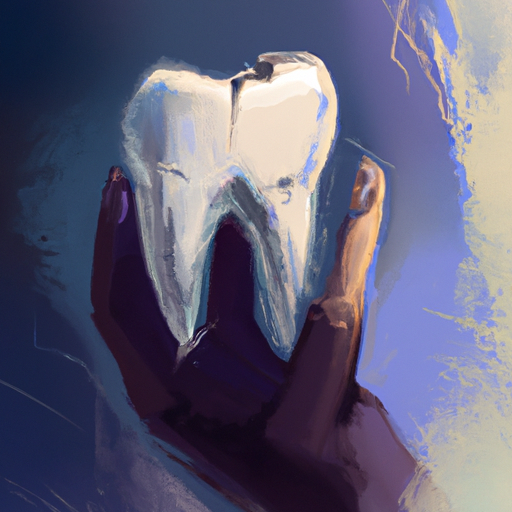Dental injuries can happen to anyone, whether it be a result of accidents, sports-related incidents, or even biting down on something hard. These injuries can range from minor chips and fractures to more severe cases like dislodged or knocked-out teeth. Understanding dental injuries and their treatment is crucial for maintaining oral health and preventing further complications. In this article, we will delve into the common symptoms, causes, and prevention methods associated with dental injuries. We will also explore how dentists diagnose oral trauma and identify the best treatment options, ranging from emergency care to restorative procedures. By gaining knowledge in this area, individuals can be better prepared to handle dental injuries and ensure prompt and effective treatment.
1. "Understanding Dental Injuries: Common Symptoms, Causes, and Prevention"
Dental injuries can occur in various forms and can range from minor chips to more severe fractures or even complete tooth loss. Understanding the common symptoms, causes, and prevention methods can help individuals take appropriate action and minimize the risk of dental injuries.
One of the most common symptoms of dental injuries is pain. Whether it is a sharp, sudden pain or a persistent dull ache, any discomfort in the teeth should not be ignored. Swelling or tenderness in the affected area, difficulty in biting or chewing, and sensitivity to hot or cold temperatures are also indicators of a dental injury.
Numerous factors can cause dental injuries. Accidents or traumatic incidents, such as falls, sports-related impacts, or car accidents, are common causes. Biting down on hard objects, like ice or unpopped popcorn kernels, can also lead to dental injuries. Moreover, poor oral hygiene, bruxism (teeth grinding), or untreated dental issues like cavities or gum disease can weaken the teeth, making them more susceptible to injuries.
Prevention plays a crucial role in minimizing the risk of dental injuries. Wearing protective gear, such as mouthguards, during sports and recreational activities can significantly reduce the chances of dental trauma. Avoiding habits like biting nails or chewing on pens can also help prevent dental injuries. Maintaining good oral hygiene by brushing and flossing regularly, visiting the dentist for routine check-ups, and promptly addressing any dental issues can strengthen teeth and prevent injuries.
2. "Diagnosing Dental Injuries: How Dentists Assess and Identify Oral Trauma"
Diagnosing Dental Injuries: How Dentists Assess and Identify Oral Trauma
Dental injuries can occur due to various reasons, such as accidents, sports-related incidents, falls, or even biting down on hard objects. When faced with such injuries, it is crucial to seek immediate dental care to prevent further complications. Dentists play a vital role in diagnosing dental injuries, as they possess the expertise and tools necessary to assess and identify oral trauma accurately.
Upon arrival at the dental clinic, the dentist will first conduct a thorough examination of the patient’s mouth. This typically involves visually inspecting the affected area, checking for any visible signs of trauma, and assessing the overall condition of the teeth and surrounding tissues. The dentist may use a dental mirror and a bright light to get a better view of the injury.
In addition to the visual examination, dentists often rely on diagnostic tools to evaluate the extent of the dental injury. X-rays are commonly used to detect fractures, dislocations, or any hidden damage to the tooth roots or jawbones. X-ray images provide valuable information that aids in determining the appropriate treatment plan.
To further assess the dental injury, dentists may also perform additional tests, such as vitality tests. These tests help determine the vitality or health of the affected tooth by assessing its response to stimuli like temperature or electric stimulation. If a tooth fails to respond to these tests, it may indicate nerve damage or a compromised blood supply, which can
3. "Treatment Options for Dental Injuries: From Emergency Care to Restorative Procedures"
When it comes to dental injuries, prompt and appropriate treatment is crucial to ensure the best possible outcomes. From emergency care to restorative procedures, there are various treatment options available depending on the nature and severity of the injury. This section will explore the range of treatment options for dental injuries, highlighting the importance of seeking professional help in a timely manner.
1. Emergency Care:
In cases of dental injuries, it is essential to seek immediate emergency care. Dental trauma often involves severe pain and bleeding, necessitating urgent attention. Dentists specializing in emergency care can quickly assess the injury, provide pain relief, and take necessary measures to control bleeding. They may also take diagnostic X-rays to evaluate the extent of damage to the teeth, gums, or surrounding structures.
2. Stabilization and Splinting:
In some instances, dental injuries require stabilization and splinting. This involves repositioning and securing the injured tooth or teeth in their correct alignment. Splints, which can be made of wire, composite materials, or orthodontic brackets, help to stabilize the affected tooth, allowing the surrounding tissues to heal properly. Stabilization and splinting are commonly used for teeth that have been partially dislodged or avulsed (completely knocked out).
3. Root Canal Treatment:
When a dental injury causes damage to the tooth’s pulp, root canal treatment may be necessary. The pulp, located in the center of the tooth, contains nerves,








